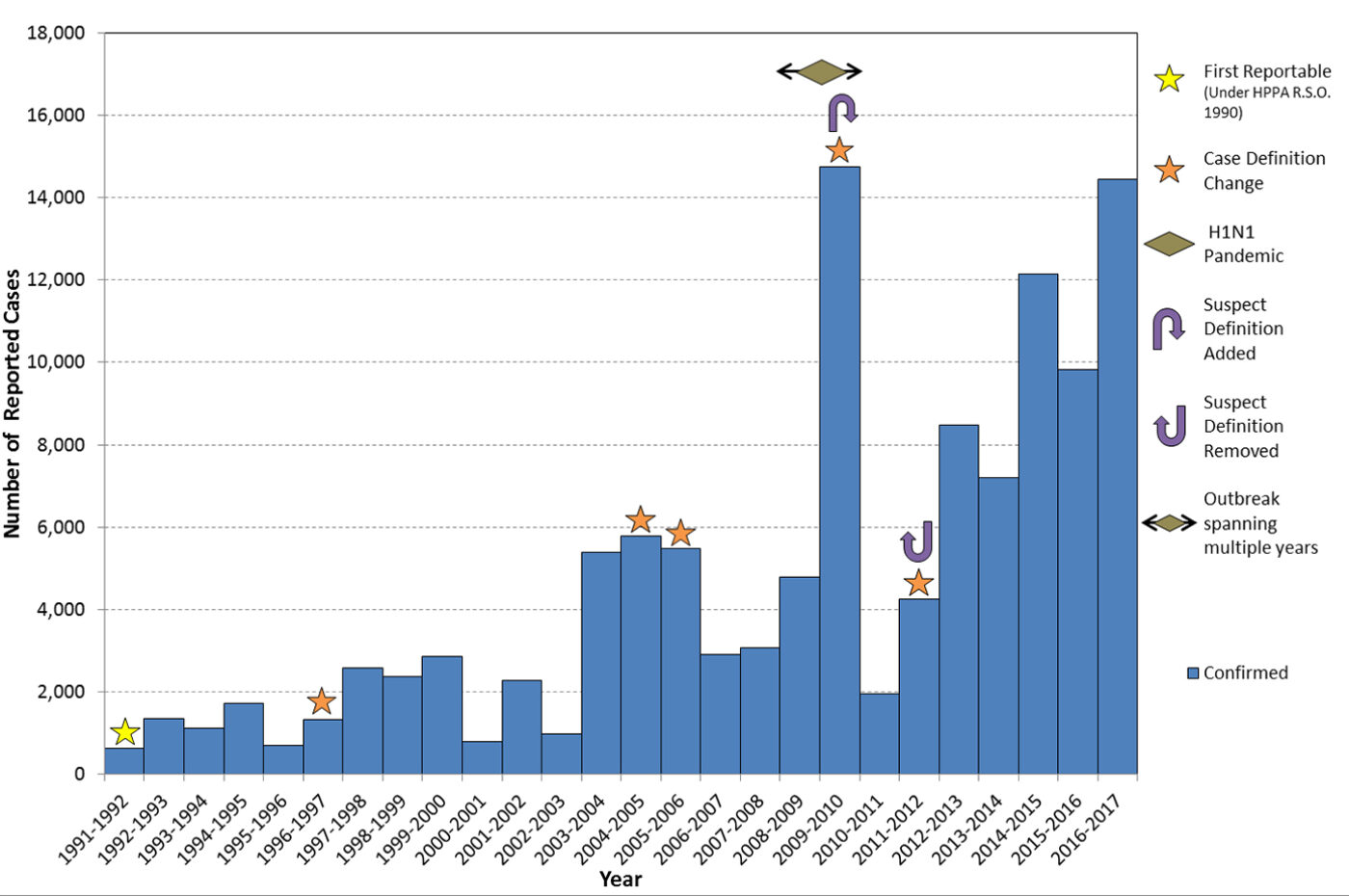Data released by Public Health Ontario indicates that more than 14,000 cases of influenza (flu) were reported throughout Ontario in 2016-17. The flu shot is proven to reduce the number of doctor visits, hospitalizations and deaths related to the flu.1 Therefore, it is particularly important for high risk groups, including patients 65 years or older, women who are pregnant, children and infants and those with medical conditions, to receive the flu vaccine.2
To administer the flu vaccine to patients five years and older, pharmacists, pharmacy students and interns must:
- Be in a pharmacy participating in Ontario’s Universal Influenza Immunization Program (UIIP),
- have completed an OCP-approved injection training course and registered their training with the College, and
- hold a valid certification in the required level of CPR and First Aid
Pharmacists participating in the UIIP are also authorized to administer the FluMist® vaccine to patients aged 5 to 17. Patients outside this age range can receive the publicly-funded FluMist® vaccine from their family physician.
The College’s Administering Injections Practice Tool contains important information on training and registration requirements. Pharmacists can also refresh their practice knowledge by referring to their UIIP agreement and FAQs from the Ministry of Health and Long-Term Care which administers the program.
EDUCATING PATIENTS
Pharmacists play an important role in supporting patient well-being and facilitating a healthier community. This includes educating patients on current evidence-based immunization practices.
Encourage patients to review the Ministry’s resources on the Flu and Flu Vaccine Safety. Common questions and answers on the flu shot are available on the Get The Facts About the Flu Shot factsheet.
DID YOU KNOW?
Of the approximate 15,500 Part A pharmacists currently licensed with the College, 65% are trained and registered to administer injections.
INFLUENZA
Figure 20. Number of reported cases of laboratory-confirmed influenza by season, Ontario, 1991/1992 – 2016/2017. Pharmacists have had the authority to administer flu vaccines since October 2012.
3. Data Source: MOHLTC, iPHIS database, extracted by Public Health Ontario on: [2013/03/07] for 1991-2004 data; [2017/05/16] for 2005-2016 data; [2010/09/09] for pH1N1 counts for the 2009-2010 season; [2009/09/03] for pH1N1 counts for the 2008-2009 season; [2011/08/10] for seasonal influenza counts for the 2008-2009 and 2009-2010 seasons.
OVERVIEW
- Unlike other reportable diseases, surveillance for influenza is conducted by season which occurs from September 1st to August 31st for the relevant year(s) (instead of the calendar year).18
- An epidemiologic link was added to the case definition in 2005. However, from 2012, the epidemiologic link was only applicable to institutional outbreaks.4
- A global pandemic of influenza A(H1N1) occurred in 2009, with the first wave of pandemic influenza beginning in the spring, 2009 and the second was in the fall of 2009 with extension of cases into 2010, with minimal seasonal influenza activity during the 2009-2010 influenza season.41
REFERENCES:
1. The flu. Retrieved at: https://www.ontario.ca/page/flu-facts#section-1
2. Flu Consult Toolkit. Retrieved at http://health.gov.on.ca/en/pro/programs/publichealth/flu/uiip/docs/flu_uiip_illness_handout_2015-16_en.PDF
3. Factors Affecting Reportable Diseases in Ontario
https://www.publichealthontario.ca/en/eRepository/Factors-reportable-diseases-Ontario-1991-2016.pdf














